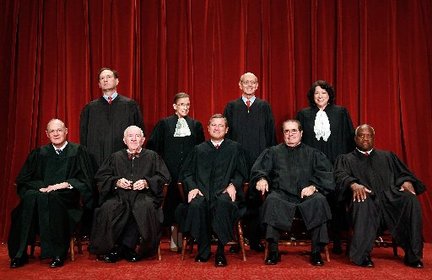New Fracking Rules Unveiled for Federal Lands
By Brian Roth, Chicago on March 30, 2015
On March 26, 2015, the Department of the Interior Bureau of Land Management (“BLM”) published its long-awaited final rule regarding hydraulic fracturing (“fracking”) in the Federal Register, which becomes effective 90 days after publication, on June 24, 2015. The new rules mark the first update to federal fracking standards in more than 30 years. The new rules are effectively the first rules that squarely address horizontal hydraulic fracturing, as the technology did not exist in present form when the old rules were enacted.

Fracking is an increasingly common, and politically polarizing, method for extracting fossil fuels. At bottom, fracking is a drilling technique used to recover gas and oil from shale rock. The process involves drilling into the earth and then injecting a high-pressured cocktail of water, sand, and chemicals down and eventually across horizontally drilled wells. The pressurized liquid fractures the subsurface rock, which consequently releases trapped oil and gas that is eventually pumped back to the surface.
Fracking is credited with advancing the recent U.S. “energy renaissance,” which has reduced oil prices to a two-decade low and allowed the U.S. to double its oil production from 2008 to 2015. In fact, the U.S. is now poised to become the world’s largest producer of oil and gas. Fracking is not without harsh and staunch critics, however, and the process has raised concerns among some regarding alleged contamination to groundwater, waste disposal, and the public’s exposure to toxic chemicals. Ardent opponents also point to air emissions and climate change, excessive water consumption, and even the increased risk of earthquakes. A recent Gallup poll suggests that Americans are equally divided on the use of fracking as a means of increasing natural gas and oil production in the U.S.
These concerns prompted several years of debate, culminating in the BLM’s final rules. The BLM intends
for the new rules to “serve[] as a much-needed complement to existing regulations designed to ensure the environmentally responsible development of oil and gas resources on Federal and Indian lands, which were finalized nearly thirty years ago, in light of the increasing use and complexity of hydraulic fracturing coupled with advanced horizontal drilling technology.” The BLM’s final rules are the first set in what is expected to be a series of federal rules governing fracking.
In sum, the new standards impose numerous new requirements on companies. The hallmarks include:
- Companies must publicly disclose additive chemicals used in the fracking process on FracFocus, which is an industry-run website, within 30 days of completing fracking operations. This requirement, however, has already been adopted by many states that have examined the issue.
- Companies must allow government employees to inspect and validate (1) the safety of the concrete barriers lining fracking wells, and (2) chemicals being stored at the fracking site.
- Companies must adhere to new requirements and specifications or how to safely dispose of contaminated water.
- Companies must submit detailed information about every proposed operation, including the location of faults and fractures, the depths of usable water, and the depth of estimated volume of fluid to be used.
- Companies must submit detailed information about the geology, depth, and locations of already exiting wells.
Despite what many perceive as laudable objectives, the fear among oil and gas companies is that the BLM’s new rules will drastically increase production costs (thereby adversely affecting oil prices), as well as stifle energy development. Indeed, the American Petroleum Institute (“API”), relying on research and consulting firm Advanced Resources International, analyzed a draft of the final rule and “estimate[d] that the total costs associated with this rule could range from $30 million per year to $2.7 billion per year.” The API suggests that the requirement of “cement evaluation logs” (“CELs”) on surface and intermediate casing before beginning the fracking process as a source of added cost. The Western Energy Alliance (“WEA”)—whose members include ConocoPhillips, Halcon Resources Corp. and QEP Resources Inc.—relying on an economic research firm’s analysis, provided a more focused prediction that the added cost of compliance would be $97,000 per new well, or $345.592 million annually. The WEA warns that considerable costs will emanate from initial delay costs, administrative costs, enhanced casing costs, cement log costs for “well types,” and cement log delay costs. Although energy trade associations are still assessing the precise costs of the new rules, many expect that the associated costs will greatly exceed the BLM’s rather conservative estimate of $11,400 per well, or $32 million annually.
The new rules have already prompted several lawsuits challenging their legality, characterizing them as “arbitrary and unnecessary burdens” that are “a reaction to unsubstantiated concerns.” One lawsuit was filed by the Independent Petroleum Association of American and the Western Energy Alliance. Another was filed by the State of Wyoming. These parties are significant stakeholders that have a sizeable presence on federal lands, and consequently they have a lot to lose with the increased cost of compliance with the new rules. Even for those entities intent on compliance, the new rules are lengthy and complicated, and will require legal consultation with attorneys specializing in the area.
As a final and important note, the rules apply to fracking on federal lands, which accounts for only approximately 10 percent of all fracking nationwide and 5 percent of all domestic oil production. The states have jurisdiction over fracking on state-owned and private land, and thus the BLM’s new rules do not apply. Accordingly, these rules do not affect the vast majority of U.S. fracking operations. Nonetheless, the BLM hopes that its new rules will eventually serve as a model and legislative benchmark for states seeking to regulate the fracking industry within their borders.

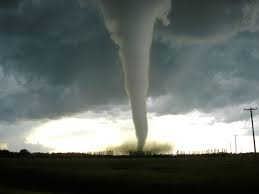 In a decision issued on May 2, 2014, the Second Circuit held, in
In a decision issued on May 2, 2014, the Second Circuit held, in  In exonerating the 9/11 defendants on the basis of the "act or war" defense, the court determined that the attacks were the "sole cause" of the alleged release, comparing the situation to the application of CERCLA’s "act of God" affirmative defense to a tornado. In her article in the Bloomberg BNA Toxics Law Reporter on May 8, 2014 (29 TXLR 407) titled "
In exonerating the 9/11 defendants on the basis of the "act or war" defense, the court determined that the attacks were the "sole cause" of the alleged release, comparing the situation to the application of CERCLA’s "act of God" affirmative defense to a tornado. In her article in the Bloomberg BNA Toxics Law Reporter on May 8, 2014 (29 TXLR 407) titled " At an
At an  create a "moral hazard". First, he explained that only primary homes, not vacation homes, would be covered by the program. Second, the buy-out contained a $750,000 cap based upon pre-storm valuations. Finally, program recipients would have sustained substantial property damage. All of these factors mitigated against the likelihood of anyone obtaining a windfall through participation in the program. Photographs depicting the horrific storm damage suffered in parts of Staten Island demonstrate the justification for buy-out relief, which is a tool designed both to assist homeowners and prevent post-storm rebuilding in flood prone areas..
create a "moral hazard". First, he explained that only primary homes, not vacation homes, would be covered by the program. Second, the buy-out contained a $750,000 cap based upon pre-storm valuations. Finally, program recipients would have sustained substantial property damage. All of these factors mitigated against the likelihood of anyone obtaining a windfall through participation in the program. Photographs depicting the horrific storm damage suffered in parts of Staten Island demonstrate the justification for buy-out relief, which is a tool designed both to assist homeowners and prevent post-storm rebuilding in flood prone areas.. 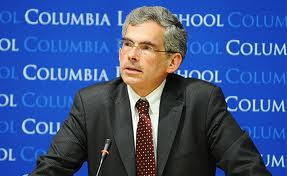 A visitor to Capitol Hill might come away with the impression that there are serious questions about whether climate change is occurring and, if it is, whether it is caused by human activity. But one place where there are few such questions is the courts.
A visitor to Capitol Hill might come away with the impression that there are serious questions about whether climate change is occurring and, if it is, whether it is caused by human activity. But one place where there are few such questions is the courts.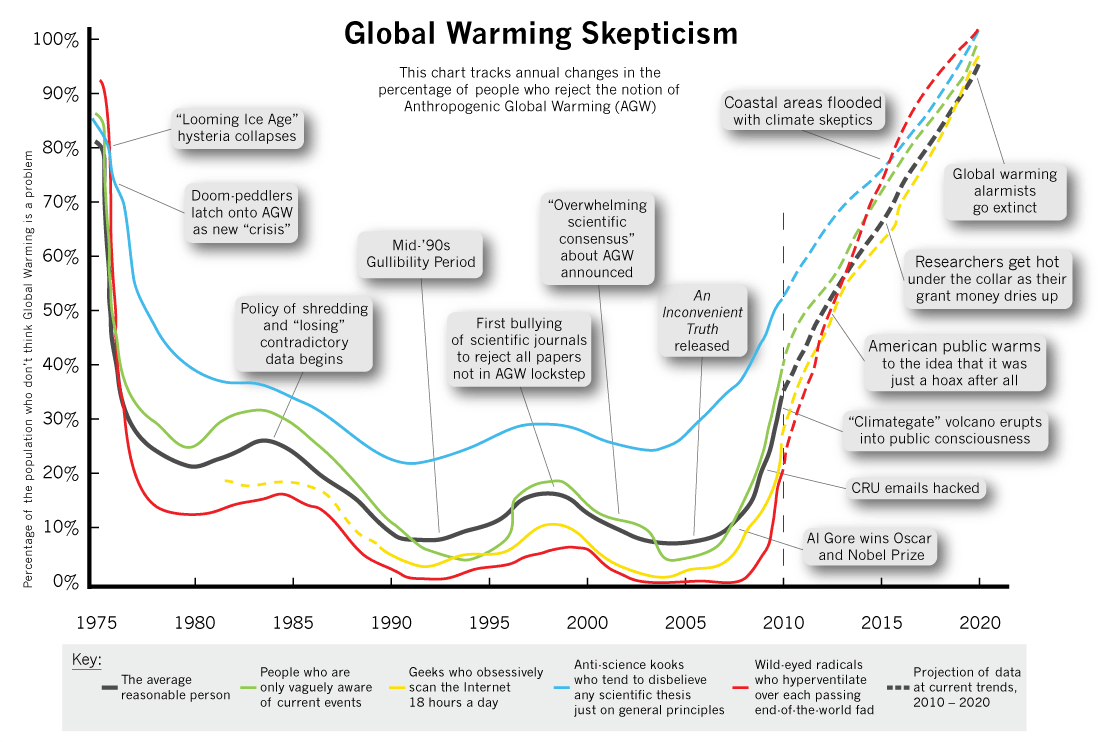
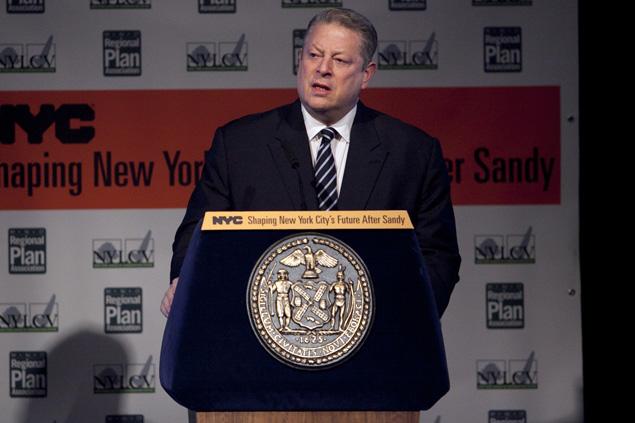
 particular, he discussed the
particular, he discussed the  The morning’s event was co-sponsored by The New York League of Conservation Voters (“NYLCV”) and the Regional Plan Association.
The morning’s event was co-sponsored by The New York League of Conservation Voters (“NYLCV”) and the Regional Plan Association. Michael Brune, the Executive Director of the Sierra Club, pointed out that in the Presidential Campaign, it was not one of the candidates running for office who made Climate Change an issue; rather; it was Mayor Bloomberg.
Michael Brune, the Executive Director of the Sierra Club, pointed out that in the Presidential Campaign, it was not one of the candidates running for office who made Climate Change an issue; rather; it was Mayor Bloomberg. Overlooked in the District of Columbia U.S. Court of Appeals decision, dated June 26, 2012, in
Overlooked in the District of Columbia U.S. Court of Appeals decision, dated June 26, 2012, in 
 The “public trust” doctrine is a legal principle derived from English Common Law. Environmental groups are now seeking to expand the application of the public trust doctrine to require states to address climate change. The concept is a new and potentially valuable addition to plaintiffs’ toolbox in climate change litigation. Until recently, the public trust doctrine has mostly been applied to protect the waters of the state – as a public resource – for purposes of commerce, fishing and recreation.
The “public trust” doctrine is a legal principle derived from English Common Law. Environmental groups are now seeking to expand the application of the public trust doctrine to require states to address climate change. The concept is a new and potentially valuable addition to plaintiffs’ toolbox in climate change litigation. Until recently, the public trust doctrine has mostly been applied to protect the waters of the state – as a public resource – for purposes of commerce, fishing and recreation.  In her ruling in Sanders-Reed, the
In her ruling in Sanders-Reed, the 
 In an
In an 
